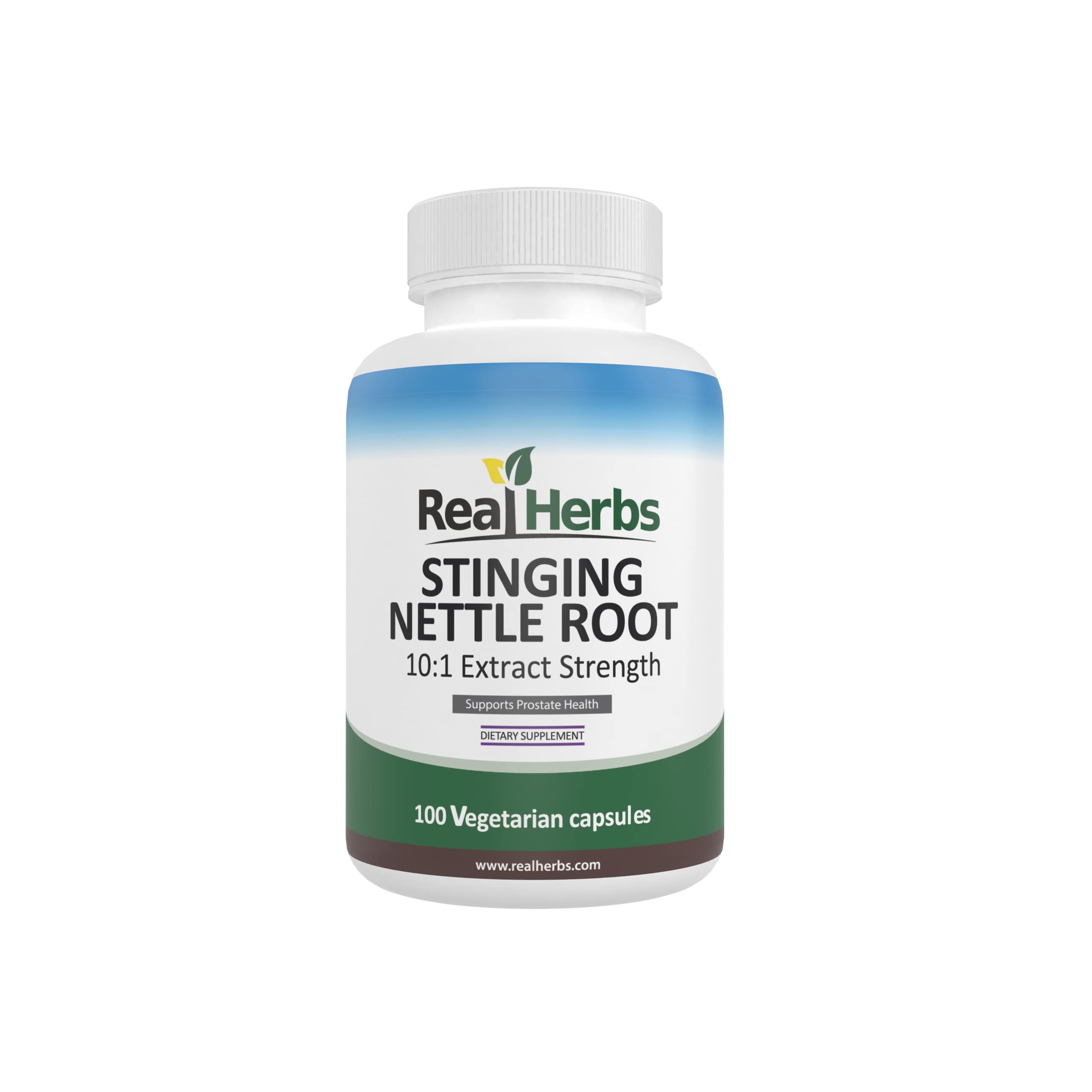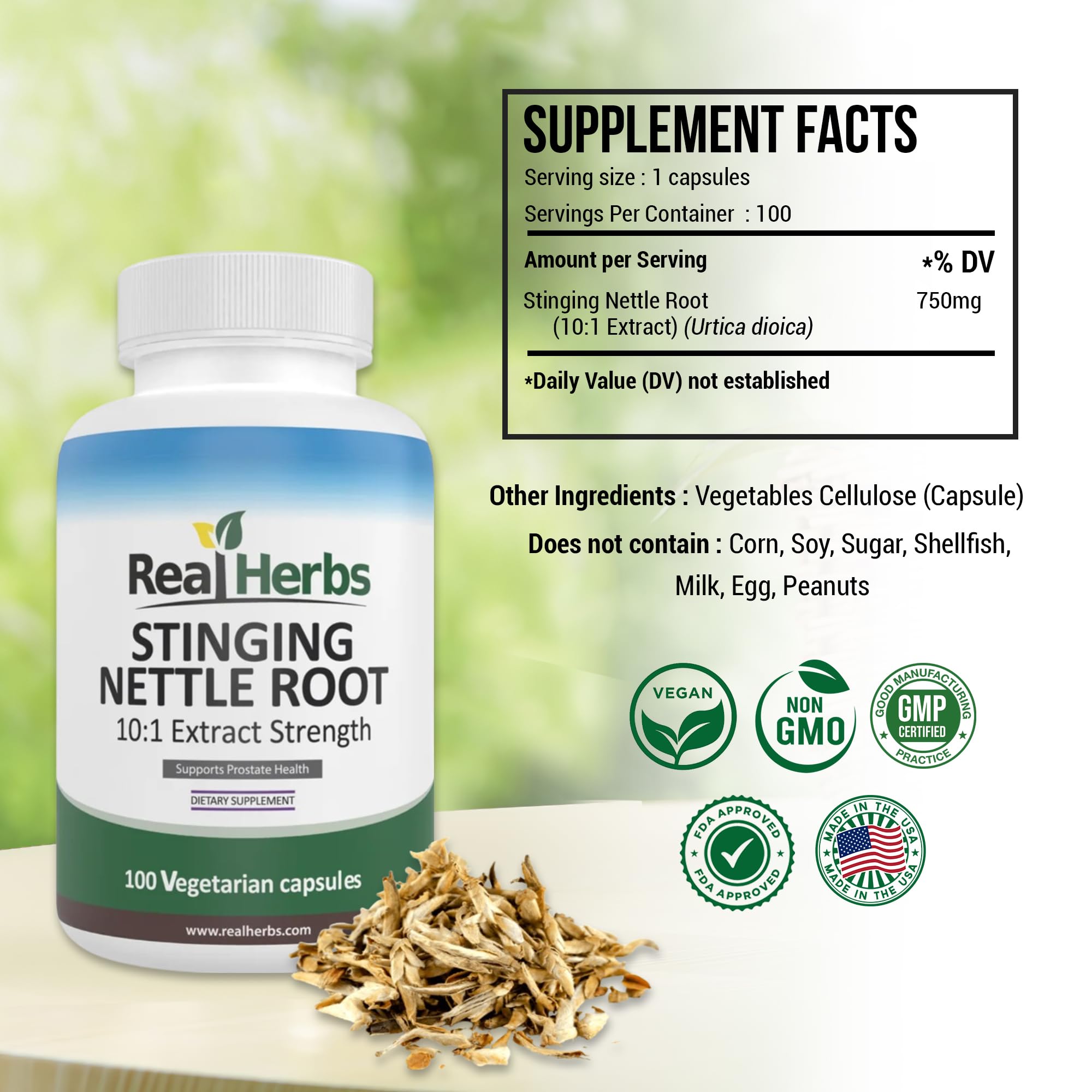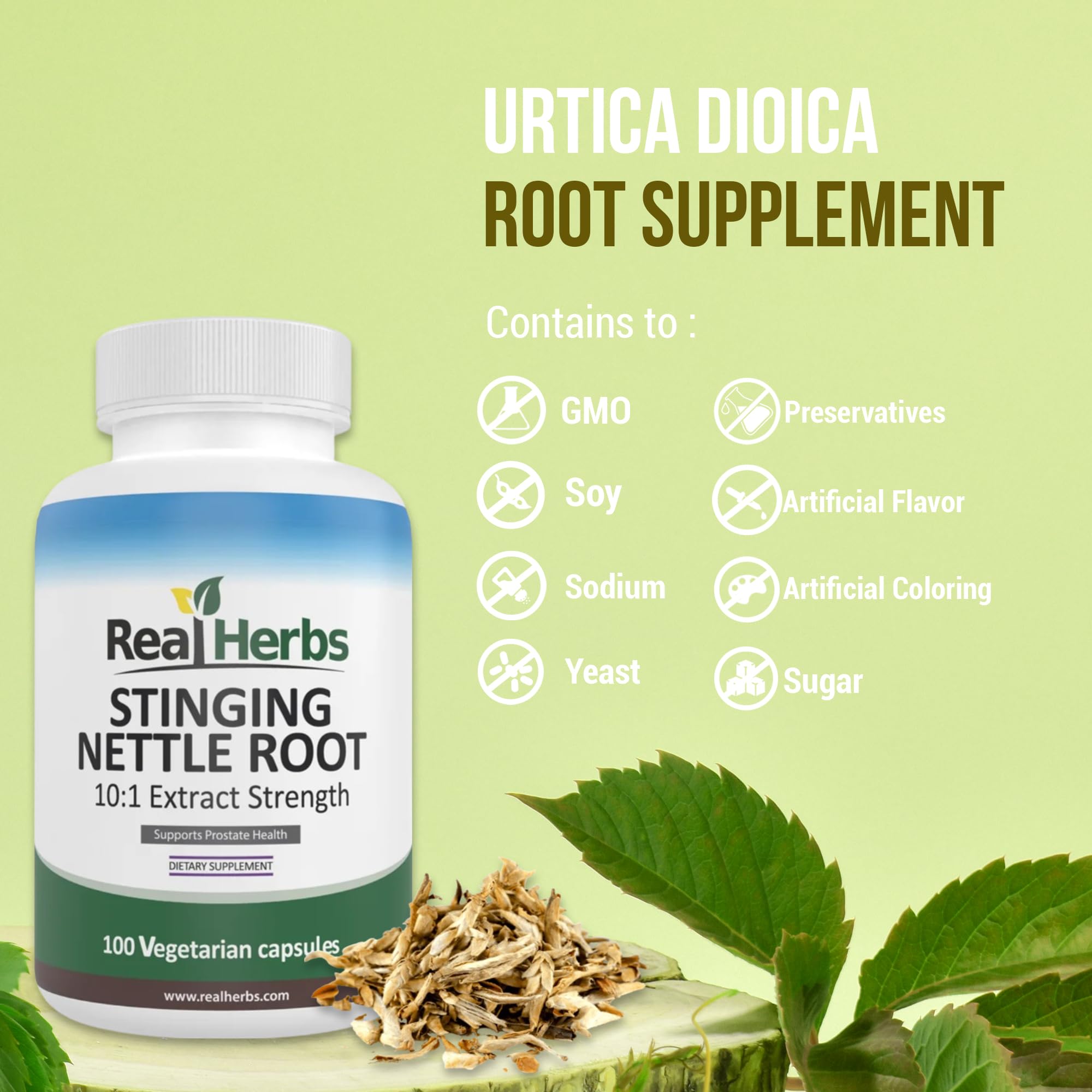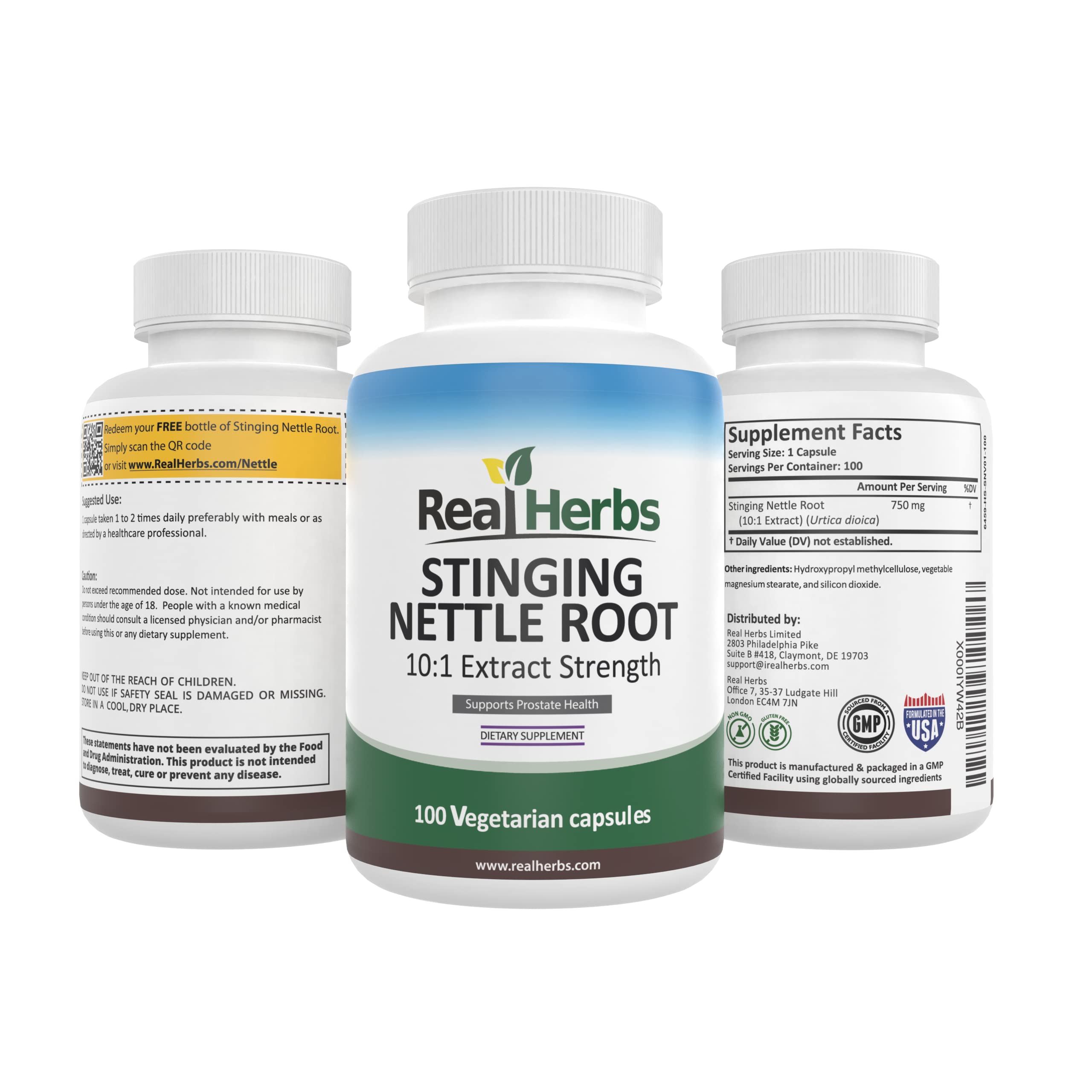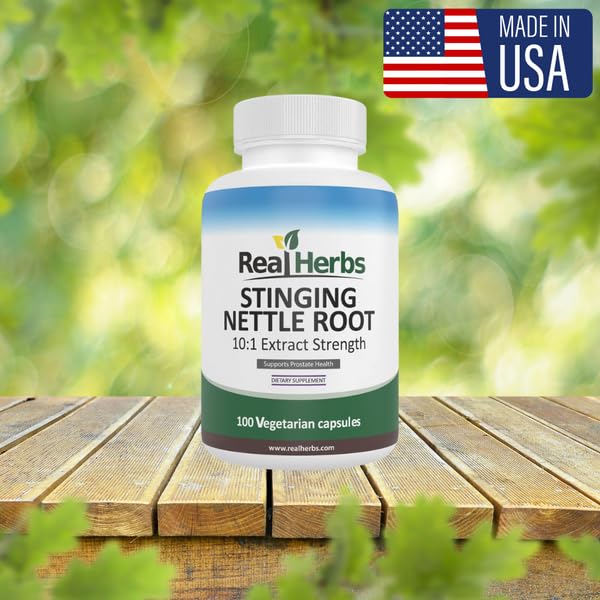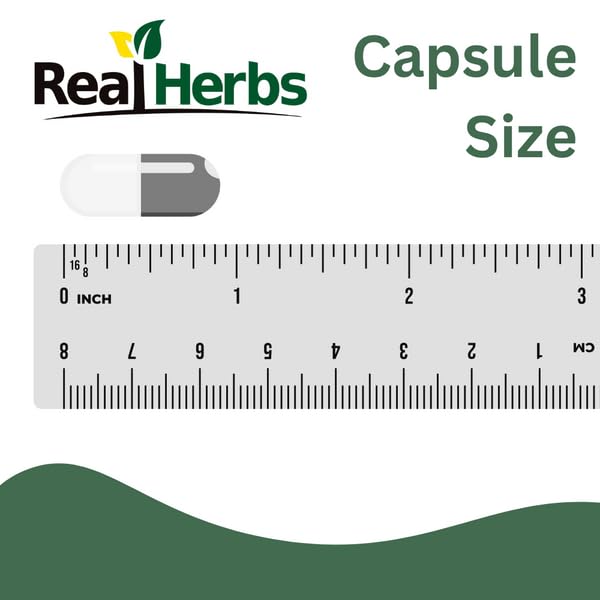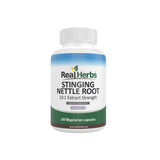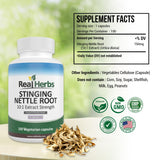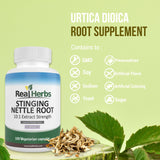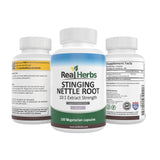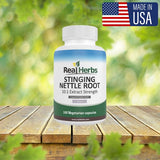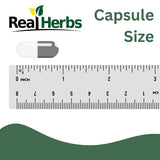When Is Stinging Nettle in Season?
When Is Stinging Nettle in Season?
A Guide to Harvesting and Potency
An essential guide by Jessica Johnson, Herbal Science Researcher at Real Herbs.
Unlocking the Seasonal Power of Stinging Nettle
Stinging nettle (*Urtica dioica*) is a remarkable plant, revered in herbal medicine for its diverse health benefits. From its anti-inflammatory properties to its support for joint health and seasonal allergies, nettle is a true botanical ally. However, like many herbs, the potency and ideal use of stinging nettle can vary significantly with the seasons. Understanding when stinging nettle is in season is crucial, especially for those interested in foraging, preparing fresh herbal remedies, or simply appreciating the peak efficacy of commercial supplements derived from different parts of the plant.
This article will guide you through the seasonal life cycle of stinging nettle, highlighting the optimal times for harvesting its leaves and roots. We'll explore how the plant's chemical composition changes throughout the year and how this influences its traditional and modern uses. By understanding nettle's seasonal rhythms, you can better appreciate its full potential as a natural health remedy.

The Seasonal Life Cycle of Stinging Nettle
Stinging nettle is a perennial plant, meaning it grows back year after year. Its life cycle begins in early spring, reaches maturity in summer, and then prepares for dormancy in autumn and winter. Each phase offers different opportunities for harvest and different concentrations of beneficial compounds.
Early Spring: The Prime Time for Nettle Leaves
The arrival of **early spring** is often hailed as the best time to harvest stinging nettle leaves. As soon as the plant emerges from the ground and produces tender, young shoots, typically from March to May (depending on your climate zone), the leaves are at their most palatable and nutritionally dense [1]. These young leaves are less fibrous and have a milder flavor profile, making them ideal for culinary uses like soups, pesto, and vibrant green juices.
- Nutritional Richness: Young nettle leaves are packed with vitamins, minerals, amino acids, and phenolic compounds, making them highly valued as a spring tonic [1, 3].
- Medicinal Potency: While the leaves contain histamine-like compounds that cause the characteristic sting when fresh, these are largely denatured by drying or cooking. The anti-inflammatory properties of nettle leaves are well-regarded, with some compounds inhibiting proinflammatory transcription factors [5].
- Allergy Support: Nettle leaf is particularly sought after in early summer for its potential to support against seasonal allergic rhinitis. Research indicates that nettle extracts can affect key receptors and enzymes associated with allergic reactions [4, 6], making spring and early summer an important period for harvesting and preparing remedies for allergy season. Studies on freeze-dried *Urtica dioica* have shown positive results in treating allergic rhinitis, suggesting its relevance during allergy seasons [6].
Summer: Maturation and Continued Use of Leaves and Stems
As summer progresses (typically May through September), stinging nettle plants grow taller and begin to flower. During this period, the leaves become tougher and coarser, and the plant starts to accumulate more silica and calcium, which can make them less palatable for culinary purposes. However, the plant's medicinal properties continue to be present in the leaves and stems.
- Flowering Period: The leaves and stems are actively growing and flowering during May through September, as indicated by studies focusing on allergic rhinitis [7].
- Chemical Shifts: A study analyzing the chemical composition of wild stinging nettle harvested monthly from April to September found significant changes in mineral content and extract yield across these months. For example, the total extract yield from the leaves was highest in April and gradually decreased until September, while mineral content varied [3]. This suggests that even within the "growing season," potency can shift.
- Continued Medicinal Use: While less ideal for fresh consumption, the mature leaves and stems can still be dried for teas or processed into extracts for medicinal use throughout the summer and beyond.
Autumn and Early Winter: The Optimal Time for Nettle Roots
Unlike the leaves, which are best harvested when young, stinging nettle roots are optimally collected in the **autumn**, after the plant has senesced (started to die back), or in **early spring** before significant new growth appears. During these periods, the plant's energy and beneficial compounds (such as lignans and plant sterols) are concentrated in the root system.
- Compound Concentration: The roots accumulate specific compounds like lignans and sterols that are highly valued for their effects on prostate health and testosterone levels [3, 8].
- Traditional Harvesting: This timing aligns with traditional herbal practices, where roots are dug when the plant's aerial parts are dormant, ensuring maximum potency. A comprehensive review on nettle root further details its efficacy profiles, often pointing to the root's distinct chemical properties [8].
Seasonal Variations in Chemical Composition and Potency
The changing seasons directly influence the phytochemical profile of stinging nettle. Research confirms that the concentration of various bioactive compounds, including flavonoids, phenols, and mineral content, can fluctuate based on harvesting time [3, 4].
- A study showed that total extract yield from leaves was highest in April, decreasing through September. Conversely, some mineral concentrations might increase later in the season. These variations underscore why targeted harvesting times are important for specific uses [3].
- This seasonal shift highlights the importance of using the appropriate part of the plant and understanding its peak potency for desired health benefits, whether it's for the diuretic effect of the leaves or the prostate-supporting compounds in the root.
Foraging Tips and Ethical Harvesting
If you plan to forage for stinging nettle, ensure you do so safely and ethically:
- Identify Correctly: Always be 100% certain of plant identification.
- Wear Protection: Use gloves and long sleeves when harvesting fresh nettle to avoid the sting.
- Choose Clean Areas: Harvest from areas free of pesticides, pollution, and heavy foot traffic.
- Sustain: Never take more than a third of a patch to allow the plant to regenerate.
- Processing: Properly dry or blanch fresh nettle leaves to neutralize the stinging hairs before consumption.
Year-Round Access to Stinging Nettle Benefits
While fresh stinging nettle is seasonal, you don't have to wait for spring or autumn to access its benefits. High-quality commercial supplements ensure year-round availability:
- Dried Herbs: Nettle leaves are commonly dried and used for teas or culinary purposes.
- Extracts: Both leaf and root extracts are available in capsule or liquid forms, often standardized to ensure consistent potency regardless of the fresh harvest season. For example, reputable brands ensure their nettle root extracts deliver consistent levels of beneficial compounds for prostate health [8].
These forms provide convenient and reliable access to stinging nettle's therapeutic properties, allowing you to incorporate it into your daily routine regardless of the time of year.
Conclusion: Embracing Nettle's Seasonal Rhythms
Understanding when stinging nettle is in season is fundamental to appreciating and harnessing the full spectrum of its therapeutic potential. From the tender, nutrient-rich leaves of early spring, ideal for allergies and general wellness, to the potent roots harvested in autumn for prostate health, each part of the plant offers unique benefits depending on its seasonal development.
Whether you're a keen forager or rely on high-quality supplements, recognizing these seasonal shifts allows for a more informed and effective approach to natural health. By aligning your use with nature's rhythm, you can maximize the benefits of this remarkable herb for year-round vitality.
Ready to experience the power of Stinging Nettle Root, year-round?
Real Herbs Stinging Nettle Root Extract is a premium, potent supplement crafted for consistent purity and efficacy, allowing you to harness the benefits of nettle root regardless of the season. Our carefully sourced extract supports healthy testosterone levels, prostate health, and overall male vitality.
Who it helps: Men seeking natural prostate support, those looking to optimize testosterone levels, or individuals who desire reliable, year-round access to nettle root benefits without seasonal limitations.
Why it’s safe/trusted: Manufactured under strict quality controls, Real Herbs prioritizes purity and potency. Our supplements ensure consistent levels of beneficial compounds, making them a trusted choice for your wellness journey.
All our products are backed by our 100-Day Money-Back Guarantee!
"I used to only think of nettle in spring, but this extract from Real Herbs makes it easy to get benefits all year. My joints feel better." - Sarah L.
"Consistent prostate support is key for me, and Real Herbs Nettle Root delivers, no matter the season." - David M.
Disclaimer: The information provided in this article is for educational purposes only and is not intended as medical advice. Always consult with a qualified healthcare professional before making any decisions about your health or starting any new supplement regimen. These statements have not been evaluated by the Food and Drug Administration. This product is not intended to diagnose, treat, cure, or prevent any disease.
Scientific Credibility & Citations
- Akbay P, Başaran AA, Başaran N. Nutritional and pharmacological importance of stinging nettle (Urtica dioica L.). *Turk J Med Sci*. 2022 Jun 29;52(3):968-981. PMID: 35800714 (Review)
- National Institute of Diabetes and Digestive and Kidney Diseases. Stinging Nettle. In: LiverTox: Clinical and Research Information on Drug-Induced Liver Injury [Internet]. Bethesda (MD): National Institute of Diabetes and Digestive and Kidney Diseases; 2012-. 2023 Mar 3. PMID: 37011125 (Review/Information Source)
- Garaeva K, Garifullin R, Sadykov E, Yulmetov A, Khayrullin R, Garaev M, Garaev A. Influence of Harvesting Time on the Chemical Composition of Wild Stinging Nettle (Urtica dioica L.). *Plants (Basel)*. 2021 Apr 29;10(5):894. PMID: 33918181 (Research Article)
- Roschek B Jr, Fink S, Maier P. Nettle extract (Urtica dioica) affects key receptors and enzymes associated with allergic rhinitis. *Phytother Res*. 2009 Jan;23(1):11-9. PMID: 19140159 (In-vitro study)
- Mittman P. Randomized, double-blind study of freeze-dried Urtica dioica in the treatment of allergic rhinitis. *Planta Med*. 1990 Feb;56(1):44-7. PMID: 2192379 (Human Clinical Trial)
- Chrubasik JE, Roufogalis BD, Chrubasik S. A comprehensive review on the stinging nettle effect and efficacy profiles. Part II: urticae radix. *Phytomedicine*. 2007 Aug;14(7-8):568-79. PMID: 17509841 (Review)
- Esmaeili A, Azizi-Soleiman F. Efficacy of Supportive Therapy of Allergic Rhinitis by Stinging Nettle. *J Complement Integr Med*. 2018 Jun 20;15(3):/j/jcim.2018.15.issue-3/jcim-2017-0099/jcim-2017-0099.xml. PMID: 29844782 (Human Clinical Trial)
- Ahmad SS, Alam S, Siddiqui AA, Ansari SA. Chemical Constituents of Stinging Nettle (Urtica dioica L.). *Curr Pharm Des*. 2024;30(10):849-860. PMID: 38542403 (Review)

